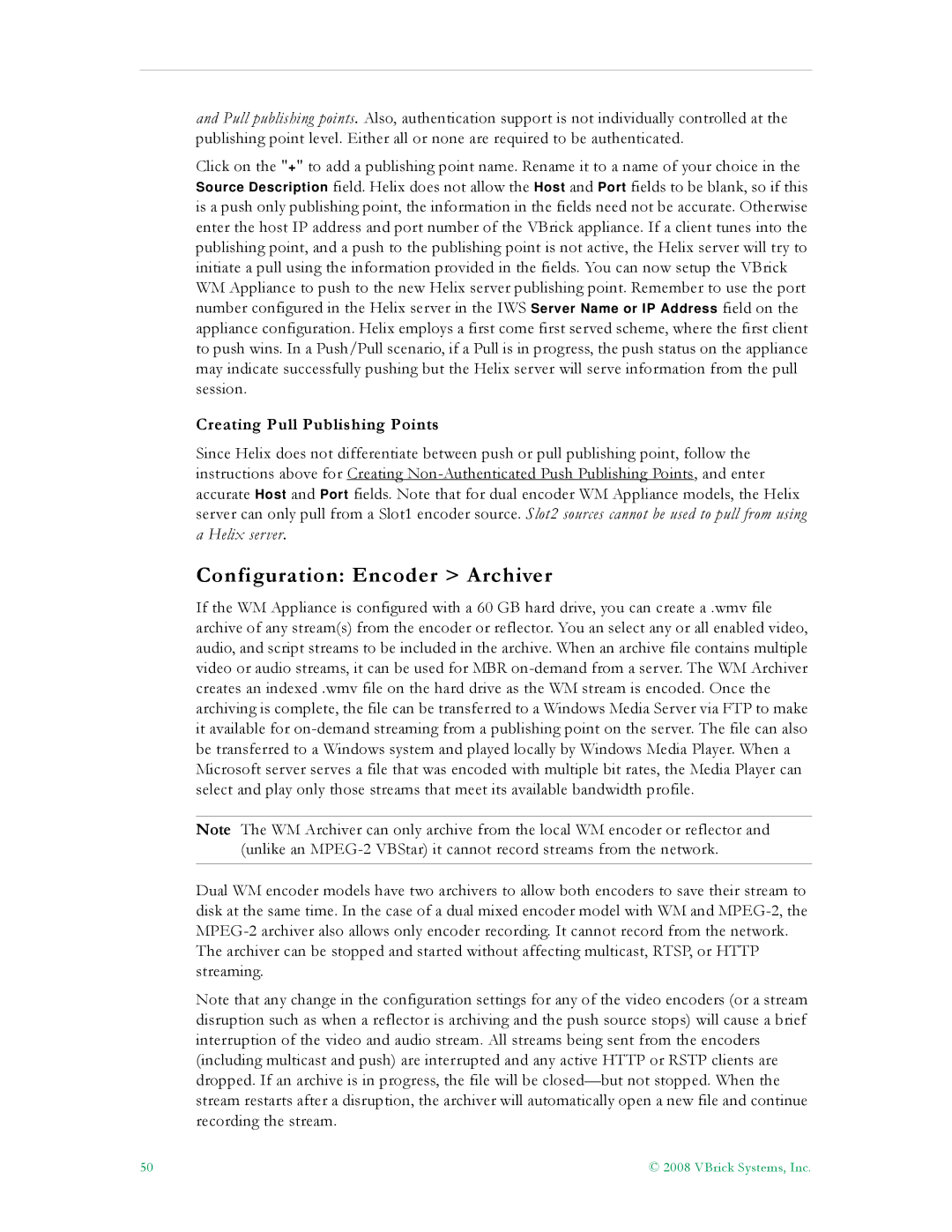
and Pull publishing points. Also, authentication support is not individually controlled at the publishing point level. Either all or none are required to be authenticated.
Click on the "+" to add a publishing point name. Rename it to a name of your choice in the Source Description field. Helix does not allow the Host and Port fields to be blank, so if this is a push only publishing point, the information in the fields need not be accurate. Otherwise enter the host IP address and port number of the VBrick appliance. If a client tunes into the publishing point, and a push to the publishing point is not active, the Helix server will try to initiate a pull using the information provided in the fields. You can now setup the VBrick WM Appliance to push to the new Helix server publishing point. Remember to use the port number configured in the Helix server in the IWS Server Name or IP Address field on the appliance configuration. Helix employs a first come first served scheme, where the first client to push wins. In a Push/Pull scenario, if a Pull is in progress, the push status on the appliance may indicate successfully pushing but the Helix server will serve information from the pull session.
Creating Pull Publishing Points
Since Helix does not differentiate between push or pull publishing point, follow the instructions above for Creating
Configuration: Encoder > Archiver
If the WM Appliance is configured with a 60 GB hard drive, you can create a .wmv file archive of any stream(s) from the encoder or reflector. You an select any or all enabled video, audio, and script streams to be included in the archive. When an archive file contains multiple video or audio streams, it can be used for MBR
Note The WM Archiver can only archive from the local WM encoder or reflector and (unlike an
Dual WM encoder models have two archivers to allow both encoders to save their stream to disk at the same time. In the case of a dual mixed encoder model with WM and
The archiver can be stopped and started without affecting multicast, RTSP, or HTTP streaming.
Note that any change in the configuration settings for any of the video encoders (or a stream disruption such as when a reflector is archiving and the push source stops) will cause a brief interruption of the video and audio stream. All streams being sent from the encoders (including multicast and push) are interrupted and any active HTTP or RSTP clients are dropped. If an archive is in progress, the file will be
50 | © 2008 VBrick Systems, Inc. |
